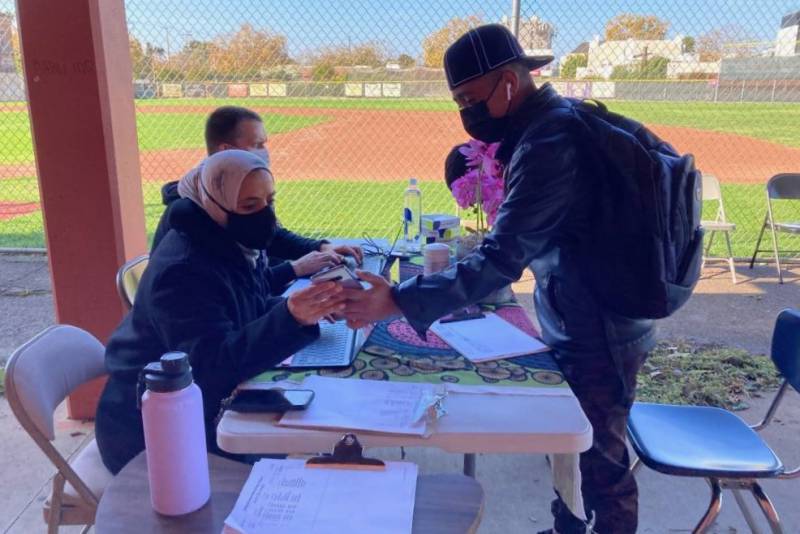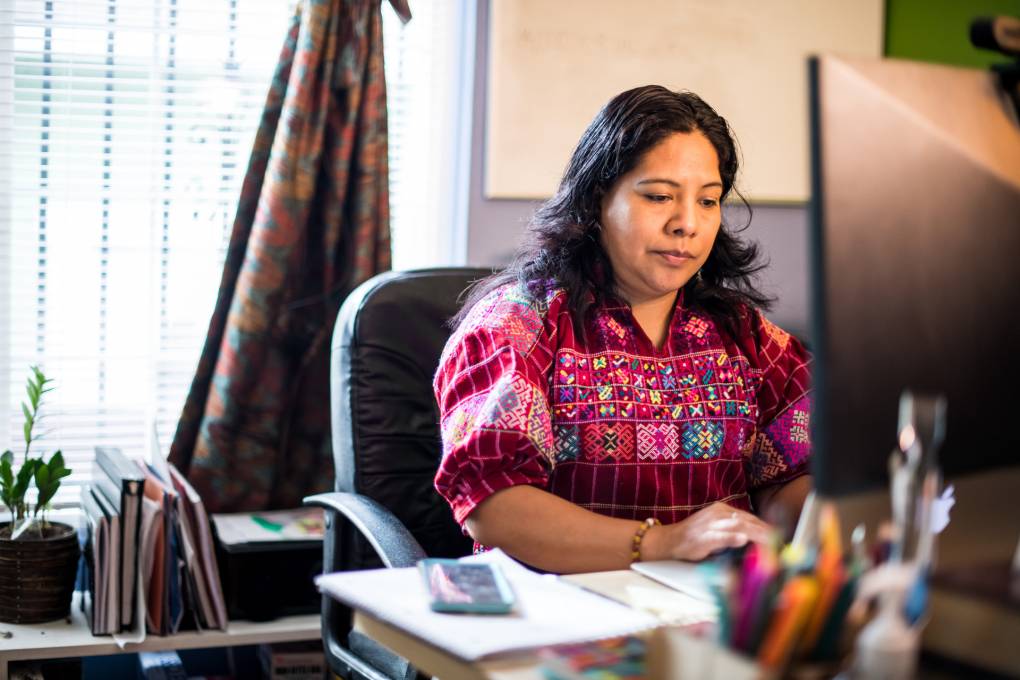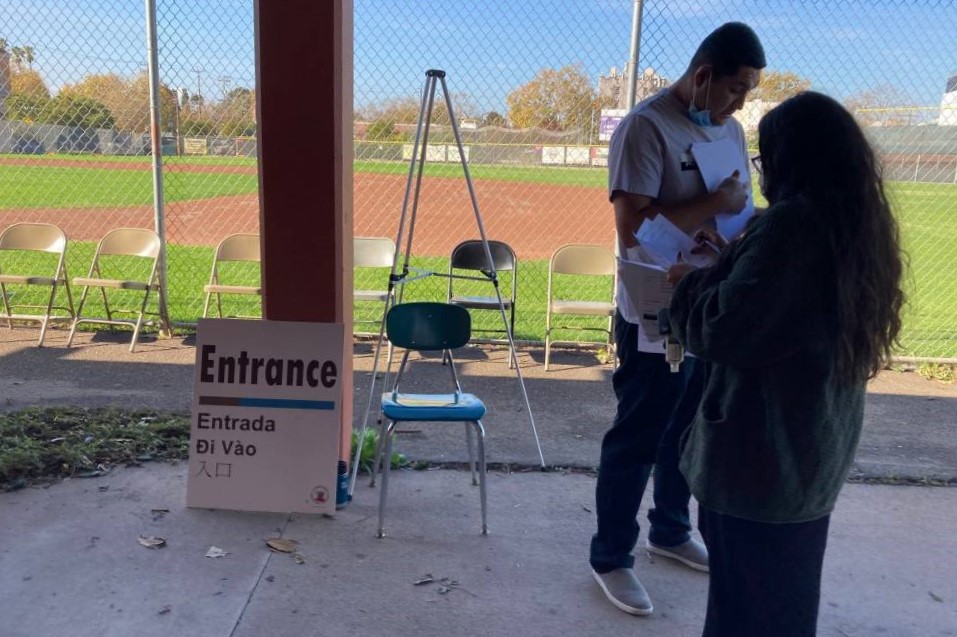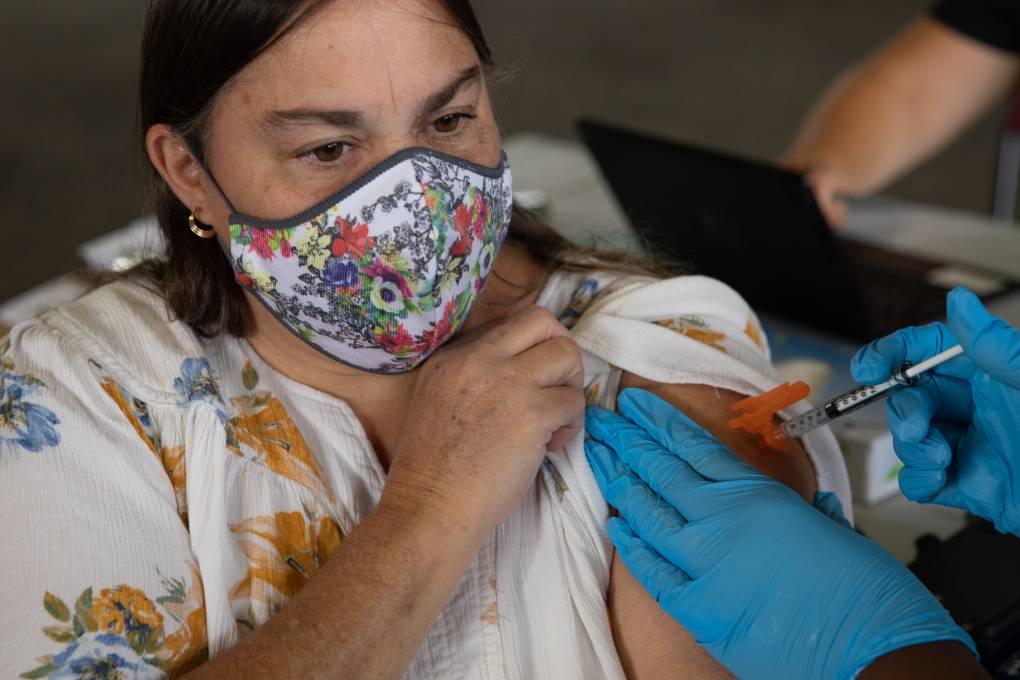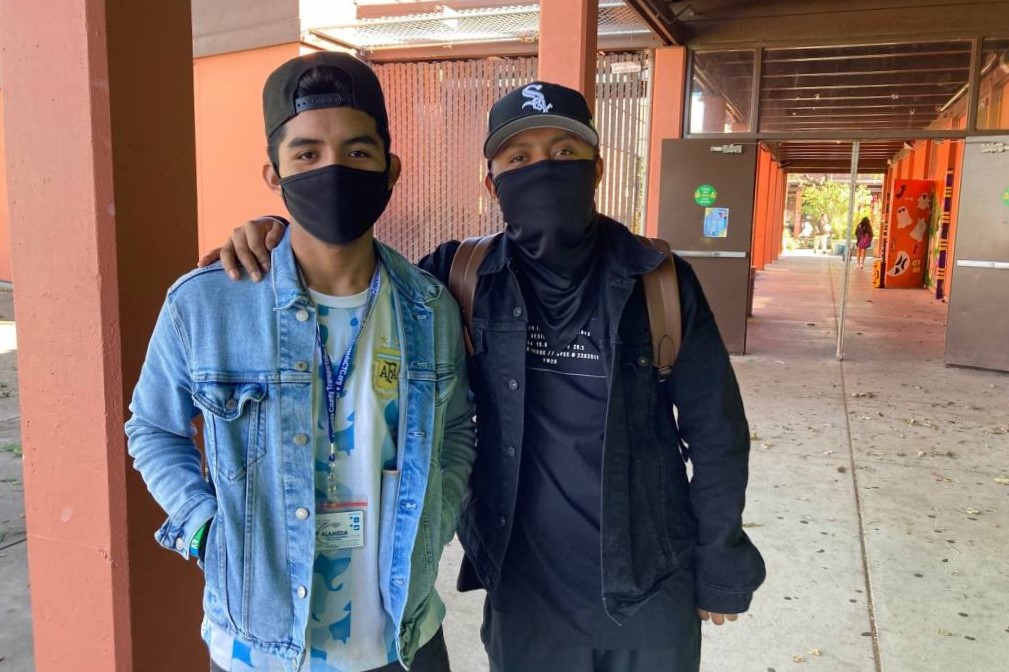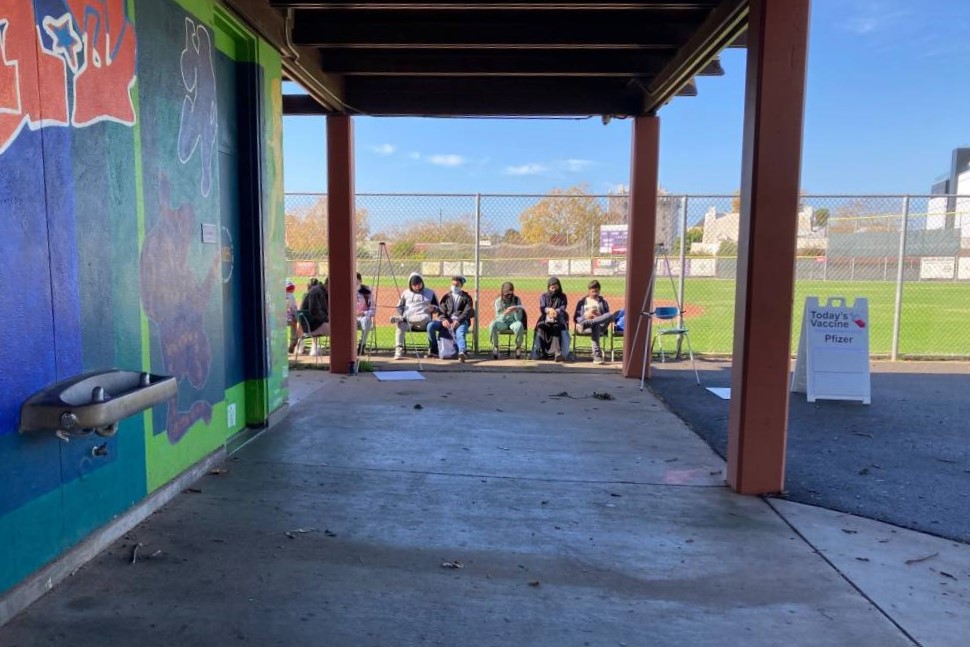Oakland students age 12 and older have less than two months left to get their COVID-19 shots before the school district’s vaccine mandate kicks in on Jan. 1. As of late October, about 60% of district students had gotten at least one dose, according to district officials.
But some schools are facing more obstacles than others in making sure their students get vaccinated. At Oakland International High School, which serves immigrant students who've recently arrived from around the world, administrators estimated only 47% of students had gotten at least their first dose as of early November.
They point to misinformation about the vaccine and language barriers as hurdles they need to work through to boost their numbers.
“We feel like we've been put in a situation where, for better or worse, we have to round up students and really very strongly recommend that they get the vaccine,” says OIHS principal Veronica Garcia. “The stakes are very high.”
Students who aren't vaccinated and don't get an exemption must either transfer to the district's independent study program — distance learning — or be disenrolled.
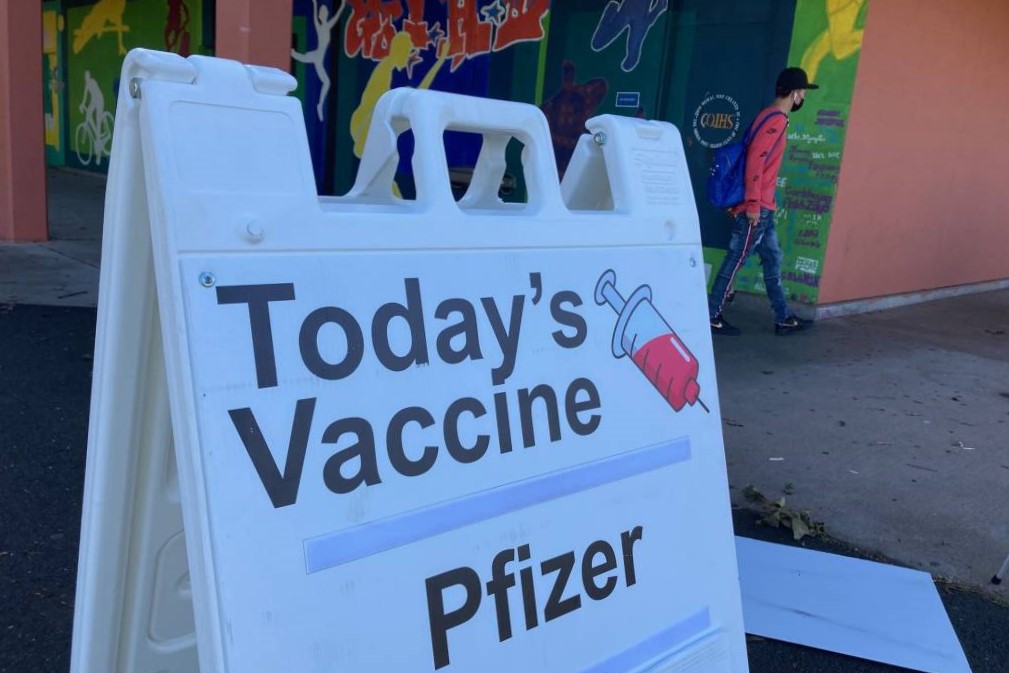
Garcia worries the district’s distance learning program isn’t equipped to serve newcomers. English-language learners suffered some of the worst academic consequences of Zoom-based school.
“It's a terrible choice, right?” she says.
She says there aren't enough resources to provide culturally relevant and accurate information on the vaccines to students and families, who tend to live in Oakland ZIP codes with lower vaccination rates.
